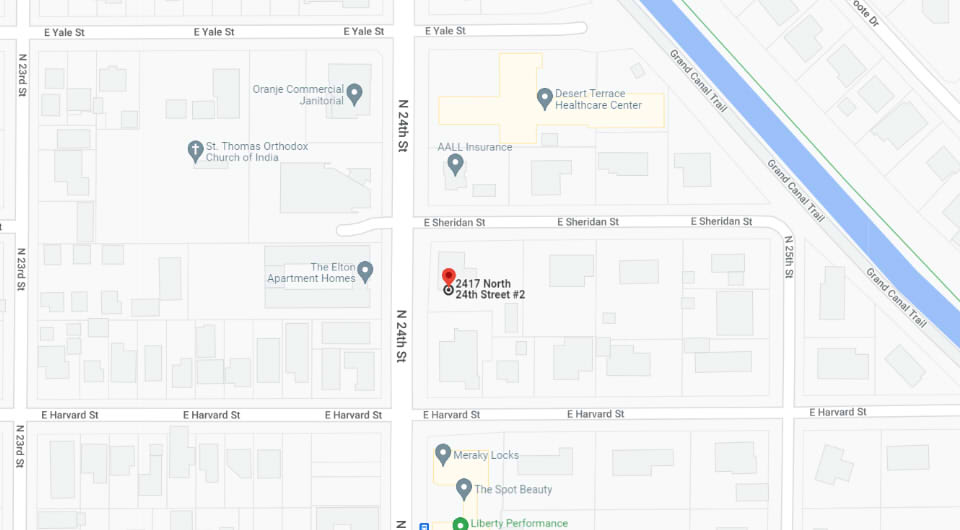Childbirth is typically a joyful event. However, unexpected interventions like cooling therapy can be distressing for parents. Cooling therapy, also known as therapeutic hypothermia or neonatal hypothermia therapy, is a medical treatment for newborns who experience oxygen deprivation during childbirth. This condition is called perinatal asphyxia or hypoxic-ischemic encephalopathy (HIE). It involves cooling the baby's body temperature to reduce the risk of brain injury and enhance long-term outcomes.
Regrettably, some of these injuries leading to the need for cooling therapy could have been prevented. In certain instances, birth-related brain injuries requiring cooling therapy can be linked to medical negligence or errors during the childbirth process. To investigate whether negligence was involved, parents can consult the Phoenix Personal Injury Attorney Law Firm. We will guide you in determining the circumstances. If negligence is confirmed, our attorneys can assist in pursuing compensation for medical expenses and related costs.
Understanding Cooling Therapy
Cooling therapy is typically recommended for newborns born at or after 36 weeks of gestation. Newborns must exhibit signs of moderate to severe hypoxic-ischemic encephalopathy (HIE).
Typically, the therapy starts within 6 to 12 hours after birth and continues for 72 hours. During this time, the baby's body temperature is intentionally reduced to about 33.5°C using a cooling blanket or cap. Medical staff will also monitor the child’s vital signs during this process.
Brain imaging is done before and after therapy to assess brain injury and changes. The primary objective is to lower the brain's metabolic rate, minimizing long-term neurological consequences. This therapy should be administered in a neonatal intensive care unit with individualized protocols to meet each baby's unique needs.
Cooling therapy offers two primary administration methods:
Whole-Body Cooling
With whole-body cooling, the entire newborn's body is cooled. This is achieved by placing the baby on a cooling blanket or mattress and meticulously controlling the cooling process to attain the target temperature, often around 33.5°C (92.3°F). Whole-body cooling effectively reduces the baby's overall body temperature.
Selective Head Cooling
In selective head cooling, the focus is on cooling the baby's head. This method involves placing a cooling cap or hood on the newborn's head. The cap circulates cooled liquid around the head, specifically targeting the brain.
This approach provides neuroprotection to the brain while maintaining a slightly higher body temperature than whole-body cooling. Selective head cooling is considered an alternative to whole-body cooling in specific cases.
The choice between these two methods is based on the newborn's clinical condition and is typically determined by the healthcare team, ensuring the most appropriate approach is chosen.
Cooling therapy for newborns is effective in minimizing brain damage through:
- Slowing metabolism — By lowering the body temperature, it reduces the brain's metabolic activity, protecting brain cells.
- Conserving energy — Cooling therapy prevents rapid energy depletion in the brain, preserving energy reserves.
- Limiting vascular permeability — It could reduce blood vessel permeability in the brain, preventing fluid and protein leakage into brain tissues.
- Controlling neurotransmitters — Cooling therapy decreases the activity of excitatory neurotransmitters, which can otherwise harm brain cells.
- Stabilizing ion flux — It maintains stable ion concentrations in brain cells, preventing harmful alterations due to oxygen deprivation.
- Reducing swelling — Cooling therapy helps minimize brain edema or swelling, a common response to injury.
- Limiting vascular permeability — It could reduce blood vessel permeability in the brain, preventing fluid and protein leakage into brain tissues.
- Preserving blood-brain barrier — Cooling therapy aims to protect the integrity of the blood-brain barrier. It is crucial for controlling substance passage between the blood and the brain.
Rewarming the Baby After the Cooling Session
Following hypothermia therapy, the baby is gradually warmed in a controlled manner to ensure a safe return to their normal body temperature. The medical team employs specialized equipment to warm the baby's body slowly, preventing abrupt temperature changes, which can be harmful.
Throughout the rewarming process, the baby's vital signs, including heart rate, blood pressure, and oxygen saturation, are closely and continuously observed. This vigilant monitoring guarantees the baby's safety and enables immediate action if any issues arise. The baby's body temperature is gently raised to the normal range, which is approximately 36.5°C to 37.5°C (97.7°F to 99.5°F).
In the rewarming phase, the baby's temperature is gradually raised, typically by 0.2 to 0.5 degrees Celsius. This cautious approach prevents abrupt changes that could be harmful. Concurrently, continuous EEG (electroencephalogram) monitoring is employed to closely watch for any seizure activity.
After achieving the target body temperature, the baby is carefully watched to ensure stability and detect potential adverse effects.
What Happens After the Cooling Therapy?
Cooling therapy lasts for 72 hours. Post-cooling, the baby's development and health are subject to ongoing assessments involving various medical tests and evaluations. These include:
- Neurological assessments — Pediatric neurologists and healthcare providers scrutinize the baby's neurological development, looking for progress and potential issues, including reflexes, muscle tone, and responses to stimuli.
- Brain imaging — Post-treatment brain imaging studies (MRI or CT scans) monitor brain structure and the extent of any injury, assessing the therapy's effectiveness.
- Electroencephalogram (EEG) — EEG tests track brain activity and detect abnormal electrical patterns that could signify neurological issues or seizures.
- Developmental assessments — Specialists assess the baby's physical, cognitive, and social development, flagging any delays or concerns.
- Blood tests — General health is monitored, and blood tests check for irregularities or markers related to brain injury.
- Hearing and vision screenings — Sensory function is evaluated, spotting hearing and vision issues linked to the brain injury.
- Cardiopulmonary monitoring — Continuous monitoring of vital signs like heart rate, blood pressure, and oxygen saturation is vital.
This comprehensive assessment strategy offers a complete picture of the baby's progress and health. It enables timely interventions if complications arise.
The duration of a baby's hospital stay post-cooling therapy varies based on their recovery and overall health. While some babies recover quickly and have shorter stays, others with severe injuries require extended care. In some cases, ongoing medical care and follow-up are needed even after discharge.
Positive signs for discharge include the baby's ability to feed and digest food properly, regular bowel movements, and expected urination. These indicate the baby's readiness for home care. The decision to discharge considers various factors, including clinical conditions, medical stability, and underlying health issues.
In cases of complications or concerns about your baby's health, effective communication is vital. Medical staff should provide clear and accurate information. This will help you, as a parent or caregiver, make informed decisions and actively participate in your baby's care.
What Studies Say About Cooling Therapy
Studies have consistently affirmed the efficacy of hypothermia treatment for newborns experiencing oxygen deficiency during birth. The most striking revelation is the remarkable reduction in mortality rates among infants subjected to this cooling therapy.
Specifically, the mortality rate for those who received hypothermia treatment was significantly lower at 28%, compared to the 44% mortality rate observed in the group that received standard care. This underscores the life-saving potential of cooling therapy, offering a substantial advantage to infants facing severe oxygen deficiency during the birthing process.
In addition to the substantial drop in mortality, the studies also examined a combined outcome. They factored in both deaths and instances of severe disability. The evaluation encompassed assessments of motor function, cognitive ability, and vision. The findings were compelling, as the cooling therapy group exhibited a significantly lower combined rate of 41%, whereas the usual care group had a higher rate of 60%. This highlights a comprehensive enhancement in the overall outcomes for infants who underwent cooling therapy. They not only had a higher likelihood of survival but also a reduced risk of severe disabilities.
Furthermore, the research revealed that cooling therapy did not elevate the risk of specific medical conditions, for example, cerebral palsy, blindness, or epilepsy when compared to standard care. This provides a reassuring affirmation of the safety of cooling therapy, dispelling concerns that it could lead to an increased risk of these conditions.
Importantly, these studies underscore the necessity of extended monitoring as children mature. Some developmental delays, whether cognitive or physical, could not manifest by 18 months. Thus, continued assessment is pivotal in ensuring the well-being and development of infants who have undergone cooling therapy.
Pursuing Legal Action Against the Medical Team
You must meet specific criteria to identify medical negligence. Recognizing medical negligence entails understanding situations where healthcare providers do not meet the expected standard of care in their profession, resulting in harm or injury to a patient.
-
Duty of Care
The initial step is to establish the existence of a duty of care between the patient and the healthcare provider. In a medical context, this duty is typically established when a doctor-patient relationship is formed. The healthcare provider is expected to deliver care and treatment per accepted medical standards.
-
Breach of Duty
Subsequently, it is vital to ascertain whether the healthcare provider breached the standard of care. The standard of care defines the level of care and skill that a reasonable and competent healthcare professional would offer under similar circumstances. It is imperative to demonstrate that the healthcare provider's actions or omissions fell below this standard.
-
Causation
The final step involves establishing a direct link between the healthcare provider's breach of duty and the patient's injury. In simpler terms, it is necessary to show that negligence was the direct cause of the harm or injury to the patient. This entails demonstrating that, had it not been for the breach of duty, the injury would not have occurred.
Identifying medical negligence requires:
- Meticulously evaluating the healthcare provider's actions.
- The standard of care in their profession, and
- The resulting harm to the patient.
When these criteria are satisfied, it may be feasible to pursue a legal claim for medical negligence.
Recognizing Medical Malpractice
Medical negligence can lead to a baby requiring cooling therapy when it results in oxygen deprivation or other complications during childbirth. Cooling therapy, as mentioned earlier, then becomes the solution for newborns who have experienced hypoxic-ischemic encephalopathy.
Here are some ways in which medical negligence can contribute to a newborn's need for cooling therapy:
Delayed Response to Fetal Distress
If healthcare providers do not promptly respond to signs of fetal distress during labor, it can lead to prolonged oxygen deprivation. This could cause HIE, which could necessitate cooling therapy to mitigate the resulting brain injury.
This delayed response could be because of several factors, including:
- Distractions or overwork — In busy labor and delivery settings, healthcare providers become distracted or overwhelmed. This could potentially cause them to overlook or delay the recognition of fetal distress.
- Interpretation errors — Even with consistent monitoring, incorrect interpretation of fetal heart rate patterns can occur, leading to a failure to detect distress.
- Lack of experience or training — Healthcare providers with limited experience or inadequate training in interpreting fetal heart rate patterns could struggle to identify abnormalities. This then translates to delays in recognizing the baby’s condition.
Medication Errors
Mistakes in administering labor-inducing or labor-augmenting medications can lead to serious complications, potentially resulting in HIE in newborns. In some cases, these medication errors can result in a reduction of blood flow to the baby's brain.
These errors could occur due to various factors, including:
- Ignoring a mother’s self-reported complications or symptoms.
- Failure to detect acid in the blood (acidosis).
- Incorrect dosages.
- Improper timing of medication administration, or
- The use of medications that are not suitable for the situation.
These mistakes can harm both the mother's contractions and the baby's well-being during labor. As a result, the baby does not receive an adequate oxygen supply.
Inadequate Monitoring
Inadequate monitoring of fetal heart rate and other vital signs during labor and delivery can fail to detect critical issues, for example, a compressed umbilical cord or placental abruption. These issues have the potential to cause oxygen deprivation, subsequently leading to hypoxic-ischemic encephalopathy. Insufficient monitoring can impede the early recognition of these complications. These issues are paramount for the safety of both the mother and the baby during childbirth.
Instrumental Delivery Errors
The improper use of instruments like forceps or vacuum extractors during assisted deliveries can result in birth-related trauma. In severe cases, brain injury in the newborn.
For example, imagine a delivery where a healthcare provider employs a vacuum extractor to assist in the baby's birth. If the vacuum extractor is improperly placed, excessive force is applied, or proper technique is not followed, it can lead to complications, including:
- Head trauma in the baby — Incorrect application of the vacuum extractor or forceps can cause head trauma in the baby, for example, bruising or lacerations.
- Cephalohematoma — Using forceps or a vacuum extractor can lead to the accumulation of blood beneath the baby's cranial bones, known as cephalohematoma.
- Intracranial hemorrhage — Severe misuse of these instruments can result in more serious injuries, for example, intracranial hemorrhage, which involves bleeding within the baby's brain.
Delayed Emergency Cesarean Section
When there is a necessity for an emergency cesarean section due to complications like placental abruption or umbilical cord prolapse, any delay in conducting the procedure can lead to oxygen deprivation.
For instance, in a scenario where a pregnant woman experiences:
- A sudden placental abruption — Where the placenta separates from the uterine wall or
- An umbilical cord prolapse — When the umbilical cord slips ahead of the baby.
Swift action is of utmost importance in both scenarios.
In cases of medical negligence during childbirth, you must establish a direct link between the negligence and the subsequent brain injury in the newborn. If you can demonstrate that healthcare provider negligence directly caused oxygen deprivation and HIE, you have grounds to sue the medical team.
Potential Defendants in a Legal Suit Based on Cooling Therapy
Potential defendants can include various healthcare professionals and institutions caring for the newborn and the mother during labor and delivery. These potential defendants include:
- Nurses — Labor and delivery nurses who provide continuous care, monitor vital signs, and liaise with the medical team. They play a pivotal role in identifying fetal distress and advocating for appropriate interventions.
- Obstetricians — The primary attending obstetrician responsible for supervising labor and delivery, making critical decisions, and ensuring the safety of the mother and baby bears significant responsibility.
- Neonatologists — These are specialists in neonatal care. They are involved in managing and treating the newborn, including administering cooling therapy when required.
- Anesthesiologists — In cases where anesthesia is necessary during delivery or for a cesarean section, anesthesiologists play a critical role. Errors related to anesthesia can also lead to cooling therapy becoming a factor.
- Hospitals or medical facilities — The healthcare institution where labor and delivery took place could be held responsible for the actions of their staff and for maintaining adequate standards of care and equipment.
- Other healthcare providers — Additional healthcare providers like pediatricians, midwives, or anesthetists could be involved in care, depending on the case's specifics. They could potentially be defendants in a medical malpractice case.
Contact a Arizona Medical Malpractice Injury Attorney Near Me
Medical negligence cases are intricate and distinct, with the legal process often proving to be intricate. In these challenging circumstances, you should engage the services of a personal injury attorney.
At the Phoenix Personal Injury Attorney Law Firm, our specialized expertise and experience are invaluable when pursuing a medical negligence case, especially in situations that require cooling therapy for your child. We work to safeguard your child’s rights by seeking just compensation for your needs for their future. Call us today at 602-641-9589 for more information.










